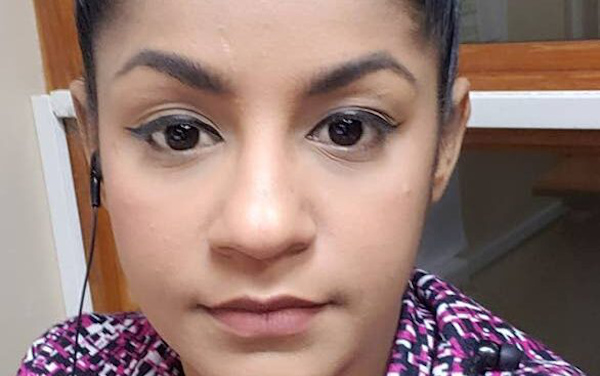“[…] How do I explain to my son that he lives in a world where the home is considered the most dangerous place for women, with the majority of female homicide victims worldwide being killed by partners or family?
“[…] If we are to end violence against women, we must be willing to challenge social and cultural beliefs around masculinity and examine the factors that fuel male violence and domination over women…”
The following guest column was submitted by Kevin Liverpool, who is the administrator of the Caribbean Male Action Network (CariMAN):

My son is an inquisitive boy. He is fascinated with bugs. If you meet him, he will tell you that the housefly carries about 350 different types of bacteria on its body. He is always asking new questions, and like a responsible father (one who does not always have a response), I try to show him how to find the answers he seeks.
But in January 2018, when he was five, he asked me that one ‘special’ question. I was watching the evening news on television—he was playing somewhere in the room—when the report about Arisa Vana David came on. The 25-year-old mother had been strangled to death late one night in her bedroom and her lifeless body was found the following morning by her eight- and three-year-old daughters. Police would later arrest a former intimate partner, 36-year-old Joseph Bryan Bennett, as the main suspect.
No sooner had I composed myself after the initial shock of this news report than my son came to me with the most sombre of expressions that a five-year-old could give. Unlike his countless questions about bugs, this one was poignant: “Daddy,” he began with innocent eyes peering deep into mine, “why are so many women dying on the news?”
It is a question that pierces me deeper each time a woman dies ‘on the news’. Or in other words, as a result of domestic violence. Since 2018, and even from earlier, this has been unnervingly frequent. And while femicide, the intentional murder of women, represents the most extreme manifestation of violence against women, it is but the tip of the iceberg; a ‘visible-invisible’ problem that is one of the worst violations of human rights. Yet it continues.
According to the 2018 National Women’s Health Survey for Trinidad and Tobago, conducted by the Inter-American Development Bank (IDB), one in three T&T women experience physical and/or sexual violence by an intimate partner in their lifetime. Sadly, this horror has been exacerbated since the onset of the Covid-19 pandemic.

(via St Lucia News Online)
How do I explain to my son that he lives in a world where the home is considered the most dangerous place for women, with the majority of female homicide victims worldwide being killed by partners or family? Bugs, despite their diversity, complexity and icky-ness, are much easier to comprehend.
But my answer to him in 2018, while well-intentioned, did not do justice to Arisa, nor to any of the countless victims. Tenderly, I held my son’s hands and, matching his sincerity, I explained that ‘when a man cannot control his anger, he will cause pain to people around him.’
While at that moment this seemed like a ‘common sense’ age-appropriate answer to give, it actually minimised the intentions of the perpetrator. It implied that abusive men are unable to control their emotions, which is why they are violent. However, more and more work with perpetrators and victims of domestic violence has been showing that the men were not ‘out of control’ when they were violent. Instead, they were seeking to control their victims.
Control was the purpose of their abuse. By explaining that domestic violence was because the man could not ‘control his anger’, I was inadvertently looking the other way. I was not holding the man accountable for the intentional harm he committed. I was saying that it was not really his fault. That he did not mean to hurt her. This was becoming more of an excuse than an explanation. And certainly, this was not the message I wanted to convey to my son.
The message I should communicate is that, in many cases, the abuse is intentional and that the purpose of the abuse is control. According to the Women’s Health Survey, controlling behaviour is a predictor of intimate partner violence.

(via Shutterstock)
Controlling behaviour could include getting jealous or angry if she talks with another man, needing to know where she is at all times, checking her cell phone, not allowing her to meet female friends, not trusting her with any money, trying to limit her contact with family, and frequently accusing her of being unfaithful. The study showed that the rate of intimate partner violence increased based on the number of controlling behaviours exhibited by the partners.
Violence against women is a manifestation of historically unequal power relations between men and women. Traditional gender norms, such as men being the breadwinners while women take care of the children and the home, esteem men to a dominant position while putting women in a position of dependency. Such unequal power relations and inequality in the home have been considered to heighten the risk of domestic violence.
If we are to end violence against women, we must be willing to challenge social and cultural beliefs around masculinity and examine the factors that fuel male violence and domination over women. Boys, especially, must learn gender equality before they become men who believe they are superior to women and entitled to power and privilege. Fathers must be prepared to go beyond simple answers and have these difficult conversations with their sons (and daughters).
Men must acknowledge that most of us have learnt how to be men in unhealthy ways. We must start the inner healing work. This requires a willingness to be vulnerable. But even vulnerability goes against what most of society says a ‘real man’ ought to be: always strong, tough, competent, self-sufficient. So, our healing requires that we swim against the tide.
We must also listen to women, seeking their honest feedback and advice, and their impressions of us and our behaviour. If we are prepared to be humble, we can gain a whole new perspective from listening to the experiences of women as they navigate a world rife of misogyny and sexism.

As we begin our healing work and focus on listening, supporting and respecting women, we must go one step further and commit to interrupting other men when their behaviour or speech is unacceptable. Silence is affirming, so we must speak up to “call out” other men on their issues.
Fortunately, my son is already smarter than I was at his age. He knows more about bugs than I do. And so, I am committed to raising a son who will not spend his life in an elusive pursuit to be a ‘real man’. He will know that manhood is not defined but using violence against women nor by how much power he can exert over others. Instead, he will know that manhood is truly defined by building relationships based on respect and equality, and by speaking out against violence.
And he will continue asking questions and searching for answers.
If you are experiencing violence at home, or know someone who is, please call the NATIONAL DOMESTIC VIOLENCE HOTLINE 800-SAVE (800-7283).
Want to share your thoughts with Wired868? Email us at editor@wired868.com.
Please keep your letter between 300 to 600 words and be sure to read it over first for typos and punctuation.
We don’t publish anonymously unless there is a good reason, such as an obvious threat of harassment or job loss.
 Wired868 Wired868 for smart sport news and opinion
Wired868 Wired868 for smart sport news and opinion






